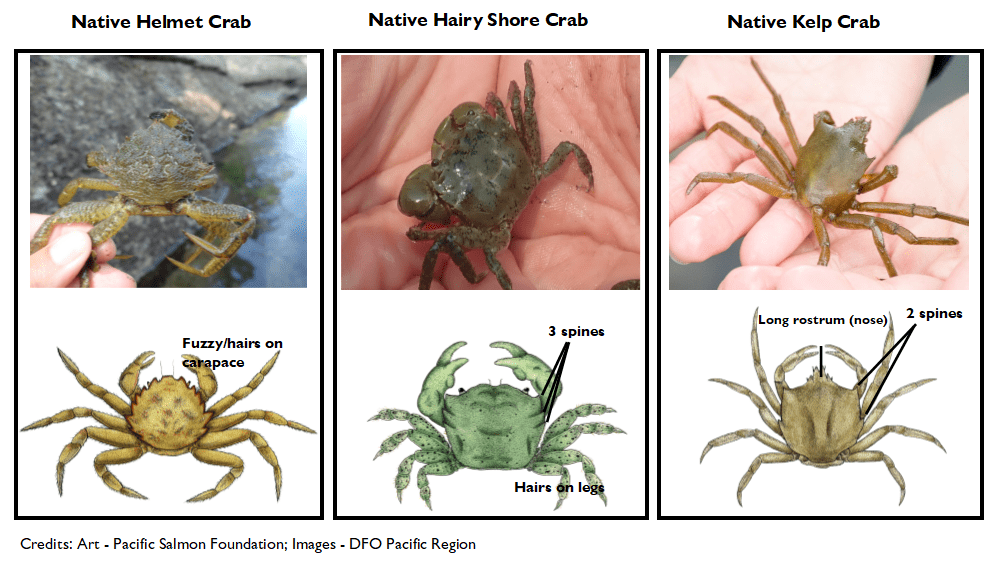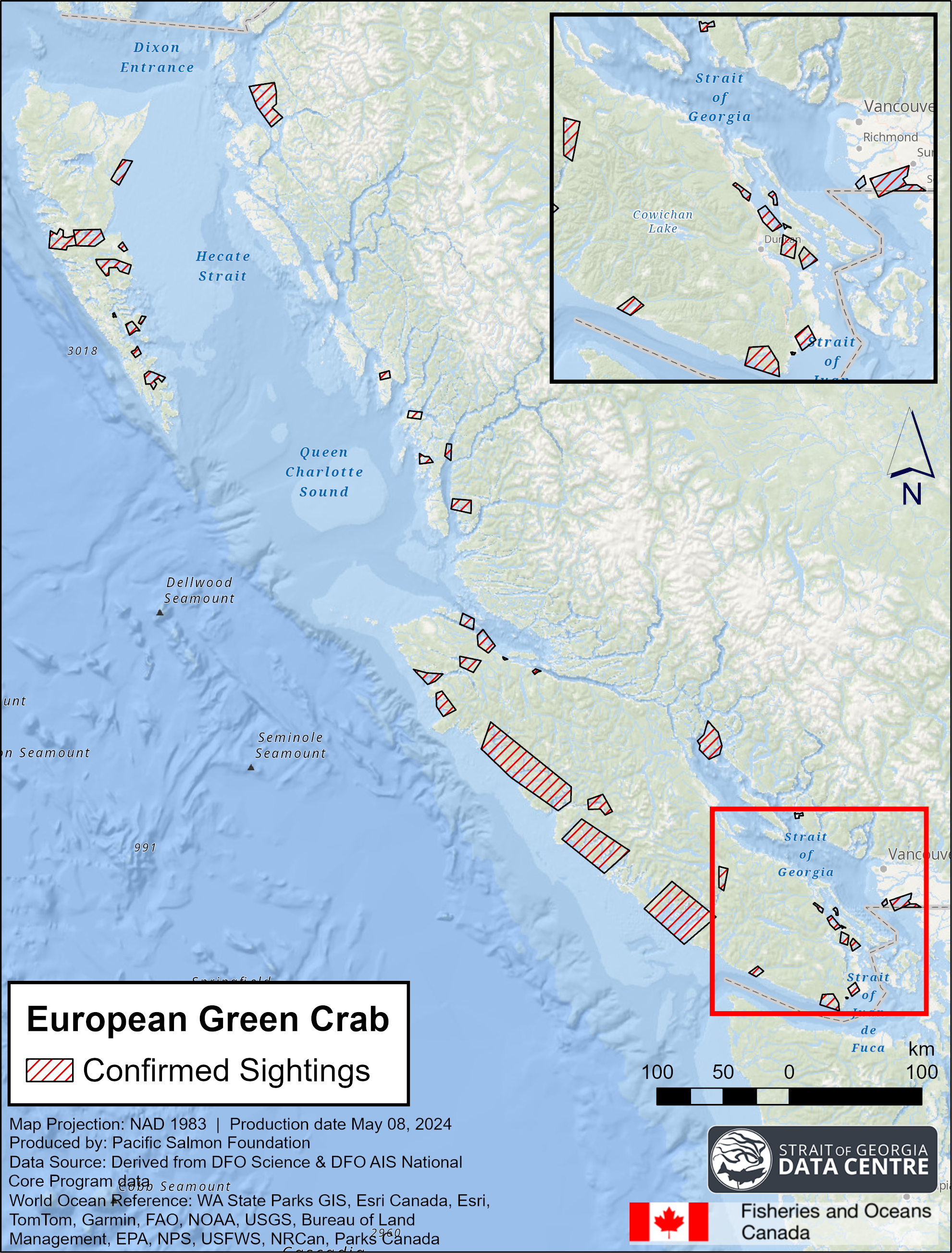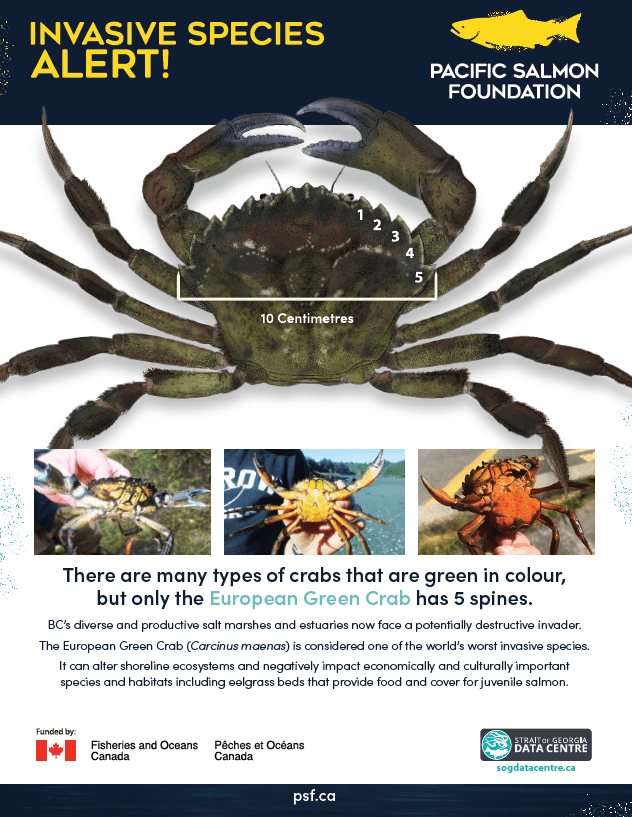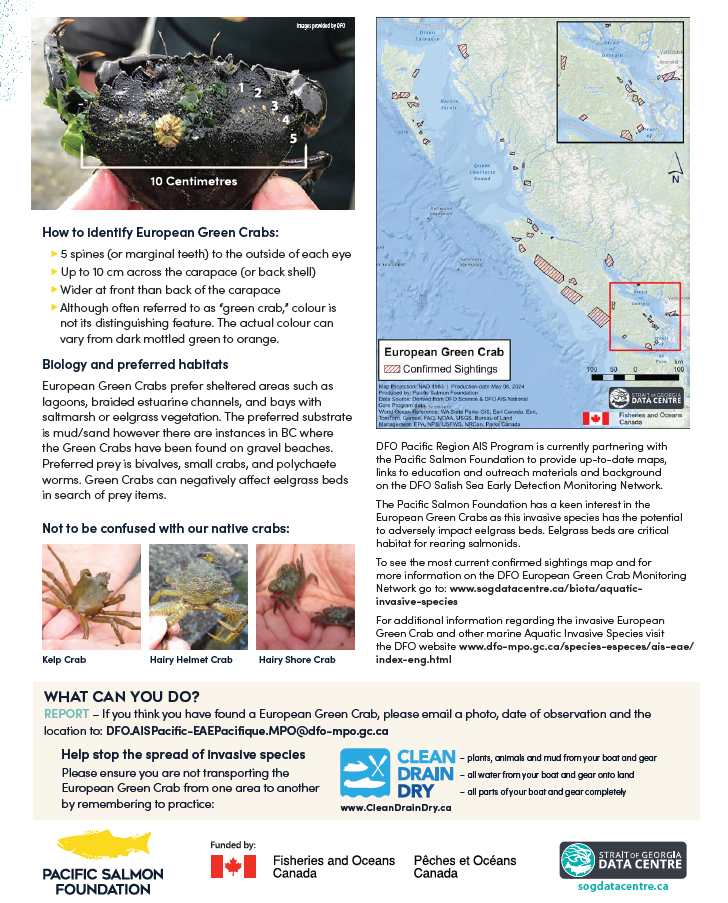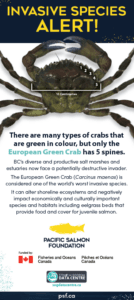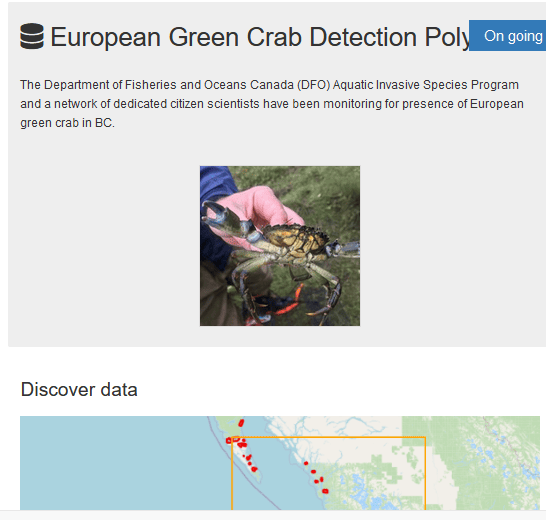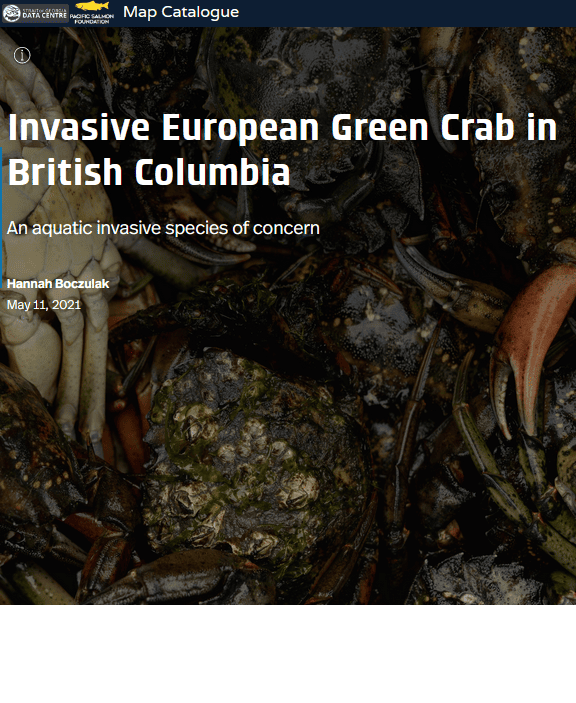Aquatic Invasive Species
European Green Crab
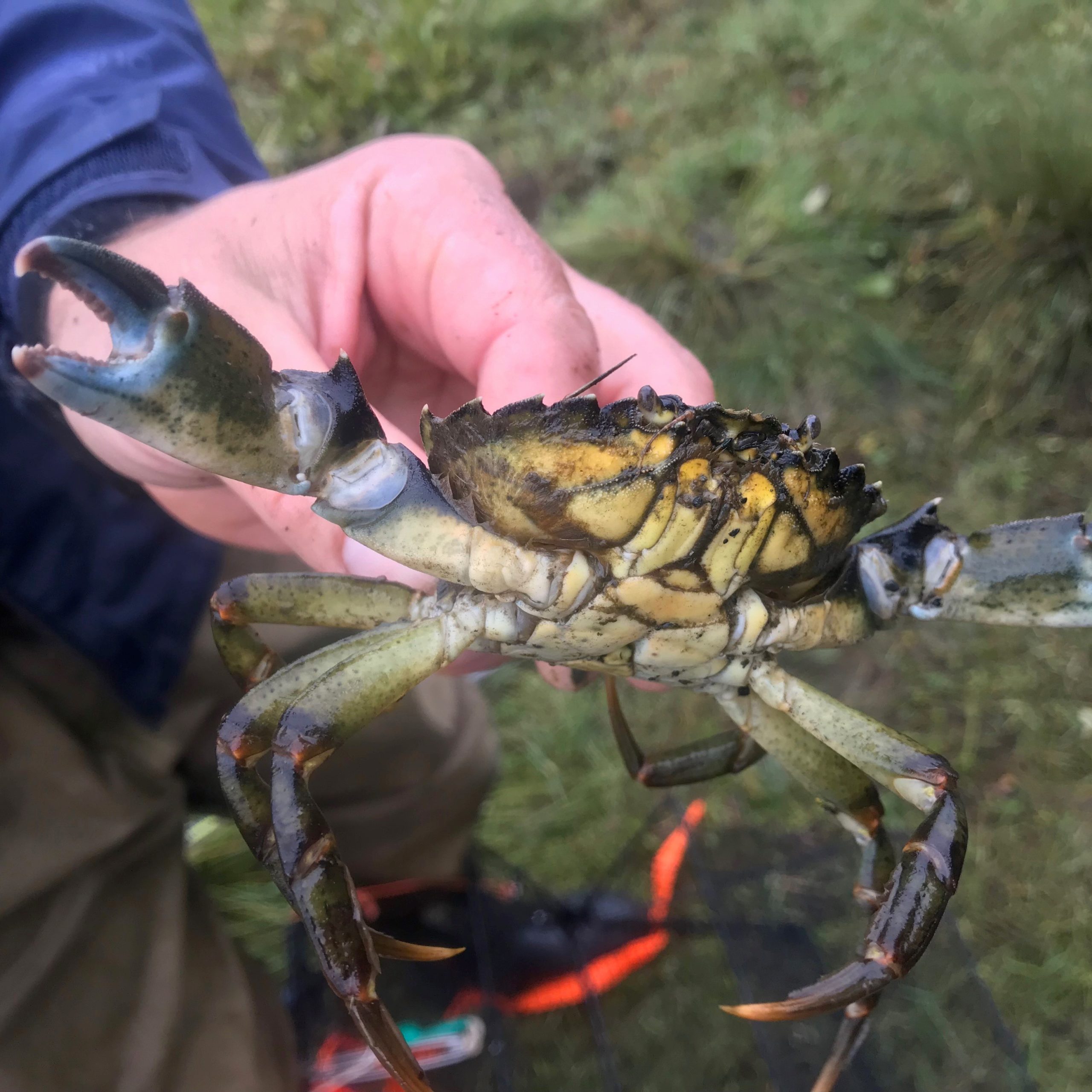
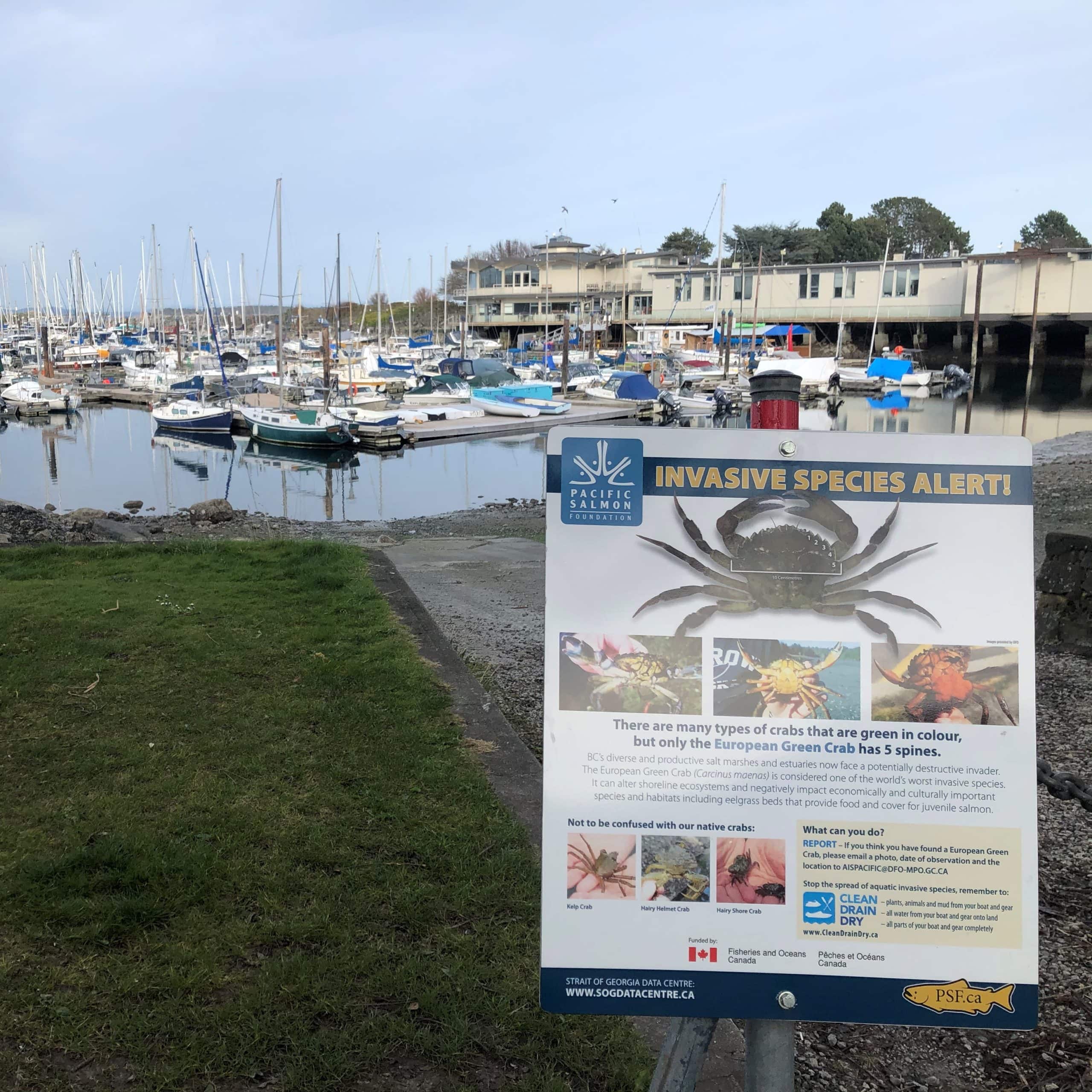
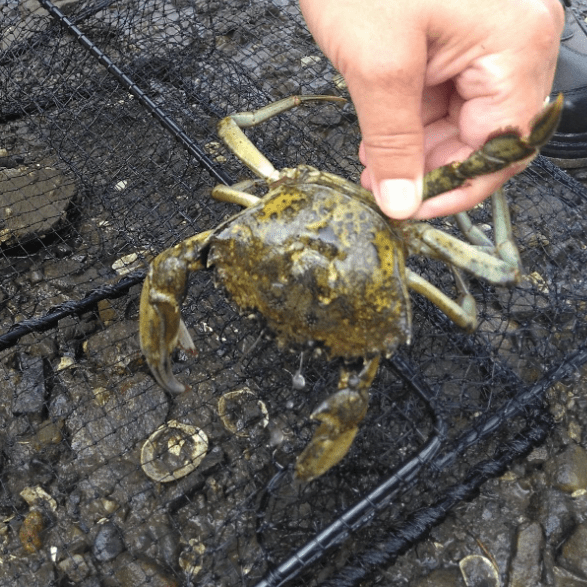
Species Description
- 5 spines (or marginal teeth) to the outside of each eye
- Up to 10 cm across the carapace (or back shell)
- Wider at the front than back of carapace
- European green crabs are not always green
- Pattern and colour variations from dark mottled green to orange
- The distinguishing feature is the 5 spines, not the colour
Suspect you have found Green Crab in an area of BC other than the west coast of Vancouver Island? Please take photos but leave the crab where you found it. Email photos and detailed location information to AISPACIFIC@dfo-mpo.gc.ca
The European green crab (Carcinus maenas) is a small coastal crab that has had major negative impacts on the marine environment of the east coast of North America. It out-competes native species hunting for food and damages vital eelgrass meadow habitats. The Green Crab has been spreading along the west coast of North America for the last 30 years, and has been detected in BC on the west coast of Vancouver Island and parts of the Central Coast since 2006.
Eelgrass meadows are a habitat common to estuaries where juvenile salmon arrive in the the ocean for the first time after hatching and rearing in freshwater streams. They provide an important temporary home for juvenile salmon by attracting their preferred food and providing protection from predators (Kennedy et al., 2018). European green crab is known to destroy this habitat by creating burrows, digging for prey, or eating the grass shoots. One BC study found that in an area with minimal green crab occupancy, eelgrass meadow loss rate increased by 2.4 to 4 times when exposed to a high density of European green crabs (Howard et al., 2019).
The Department of Fisheries and Oceans Canada (DFO) Aquatic Invasive Species Program and a network of dedicated citizen scientists have been monitoring for presence of European green crab in BC. With approximately 500 traps being set in 2019, the citizen science network is set to expand with new volunteers being trained and relationships developing with new partner organizations. Pacific Salmon Foundation is partnering with Fisheries and Oceans Canada in order to broaden public outreach through the creation and distribution of educational brochures, posters and signage.
As a beach-going citizen, you are encouraged to contact Fisheries and Oceans Canada if you sight a European green crab in areas of BC other than the west coast of Vancouver Island. Please take photos but leave the crab where you found it. Email photos and detailed location information to AISPACIFIC@dfo-mpo.gc.ca. Before contacting DFO, confirm that you are not viewing one of BC's native crabs that appear green in colour.
